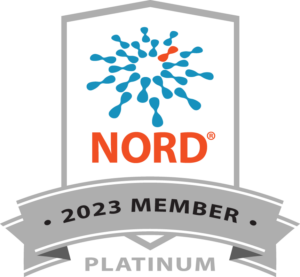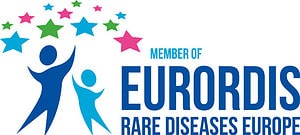Dealing with the Fatigue of Mito
The severe fatigueThe overall feeling of tiredness or lack of energy. It is not the same as simply feeling drowsy or sleepy. Being fatigued means having no motivation or energy. of mitochondrialRelated to the mitochondria. disease (Mito) can be one of the most difficult symptoms that people with Mito suffer from. This article discusses the general overall tiredness experienced by people with Mito.
The biggest overall principle to follow in dealing with fatigue is to “think” energy conservation techniques in everything you do. Energy conservation means looking at your daily routines to find ways to reduce the amount of effort needed to perform certain tasks, eliminating other tasks, and building more rest throughout the day. Keep in mind not every technique will work for you. These are suggestions you can use and adapt to find the right fit for you. Energy can be thought of as money, remember to spend your energy “money” wisely, you only have so much!
One hurdle to using these listed energy conservation strategies is the amount of effort it takes to put some new organizational systems in place. This brings up another principle in dealing with the fatigue of mito; Learning to accept offers of help from others and learning to delegate tasks. While easier said than done, it will really go a long way to improving the quality of your life, especially when you realize that spending your energy money doing some easily delegated tasks will leave you too fatigued to read to your child, spend quality time with a loved one or just read a book.
General Guidelines for Dealing with Fatigue
Rearrange Your Environment
- Keep frequently used items in a location where you will use them. This avoids having to carry them around or do extra walking to get them.
- Replace existing heavy items with lighter one (plastic vs. glass).
- Use good body mechanics – don’t carry equipment if you can push it. Slide, don’t lift, push, don’t pull. Maintain good posture. Bend at the knees, not the waist. Eliminate unnecessary motions. Use both hands when possible while carrying. Adjust work-spaces such as raising a tabletop to eliminate awkward positions.
- Install long handles on faucets or doorknobs.
- Consider moving your bed to the first floor to eliminate stair climbing.
- Organize the kitchen for maximum efficiency. Place the most often used items on the lowest shelves. Make a cooking area having all potsIt is a form of orthostatic intolerance. Symptoms of the condition occur upon standing up from a reclining position. The primary symptom of the intolerance is lightheadedness, fainting and an uncomfor and pans together close to the stove. Spices and utensils should also be as close to the cooking area as possible. Consult an occupational therapist to help personalize the ideas listed here and enlist a helper or two to rearrange your living environment.
Eliminate any Unnecessary Effort
- Sit rather than stand whenever possible, i.e.: when preparing food, washing dishes, when talking on the phone.
- When dressing, sit, have your clothes at arm’s length, dressing the lower parts of your body first as this requires the most energy expenditure. Bring your feet up to you rather than bending down to them. Work slowly and methodically, resting when needed. Buy clothes that are easy to care for and put on.
- Shower using a shower chair, remain sitting when shaving your legs instead of bending over, have a chair in the bathroom so you can sit while drying yourself.
- Use adaptive equipment that is appropriate to your situation, i.e.: book holder, a jar opener, a reacher, text to speech software or hand-free headset for your phone.
- Organize the method in which you work, repetition of the same methods will increase proficiency and save time and energy.
- Soak your dishes before washing, let them air dry or consider using paper products.
- Buy prepared foods and try to keep prepared healthy snacks available such as precooked hard-boiled eggs, cheese slices and fruit.
- Shopping can be an exhausting activity so try to find a grocery store that accepts phone orders and delivers. A few large grocery chains have online ordering and delivering. If you go shopping, use electric carts or wheelchairs, which most large grocery stores make available. Other items are available from catalogs by mail, phone or the Internet. Take advantage of these effective alternative ways of shopping. Think of how many stores you can visit without leaving your chair!
Plan Ahead
- Pre-plan your activities and try to make a daily or weekly schedule.
- Ask yourself a few questions: Is there too much to do on a single day? Are heavy tasks alternated with light ones? Are heavy tasks distributed throughout the week? Have I scheduled enough time to for activities with enough time between each one to rest? Rushing takes more energy!
- Make fewer trips around the house; if you have stairs, organize your day so you minimize the need to climb them.
- Cook in larger quantities and refrigerate or freeze extra portions.
- Work rest breaks into activities as often as possible. Take a break before you get tired.
- Try to plan some type of exercise into your weekly routine. Toned muscles require less energy to function.
Prioritize
- Eliminate or reduce tasks that aren’t that important you.
- Remember to delegate tasks to family or friends who offer to help.
- Consider hiring professionals, such as a cleaning service or lawn service, to cut down on your workload.
- Decide what are the most important things in your life and spend your energy money on them.
- Always listen to your body, know your limits and don’t let yourself become overtired.
- If you do overdo it, try not to be too hard on yourself. Walking the Mito path is very challenging and learning how much activity is too much is sometimes determined by when we crash! The goal is to live a rich and full life with the least amounts of crashes as Mito-possible.










